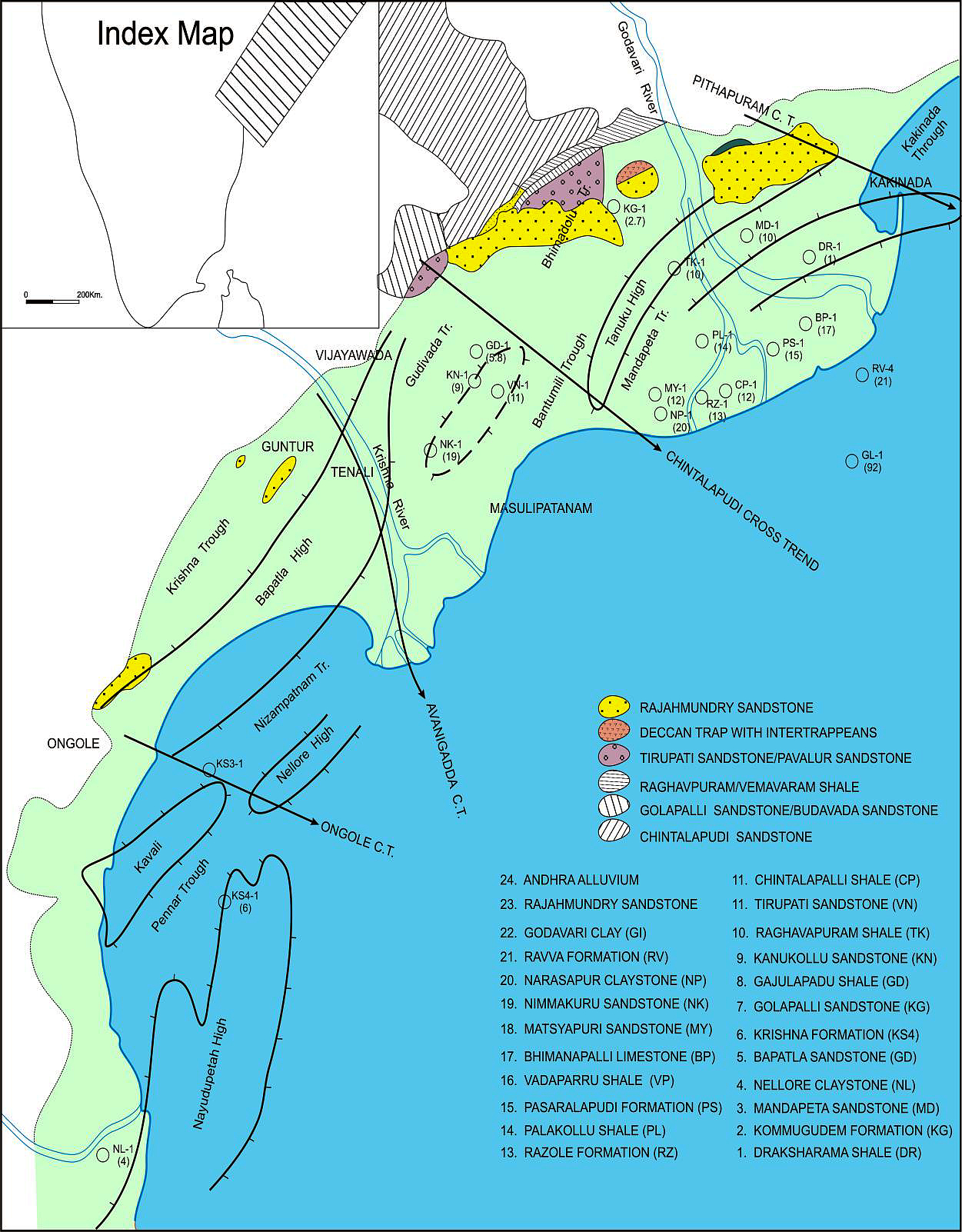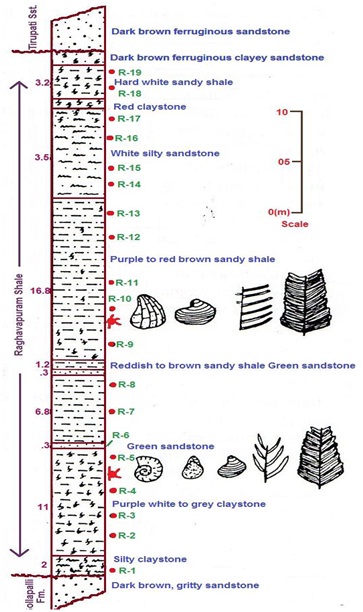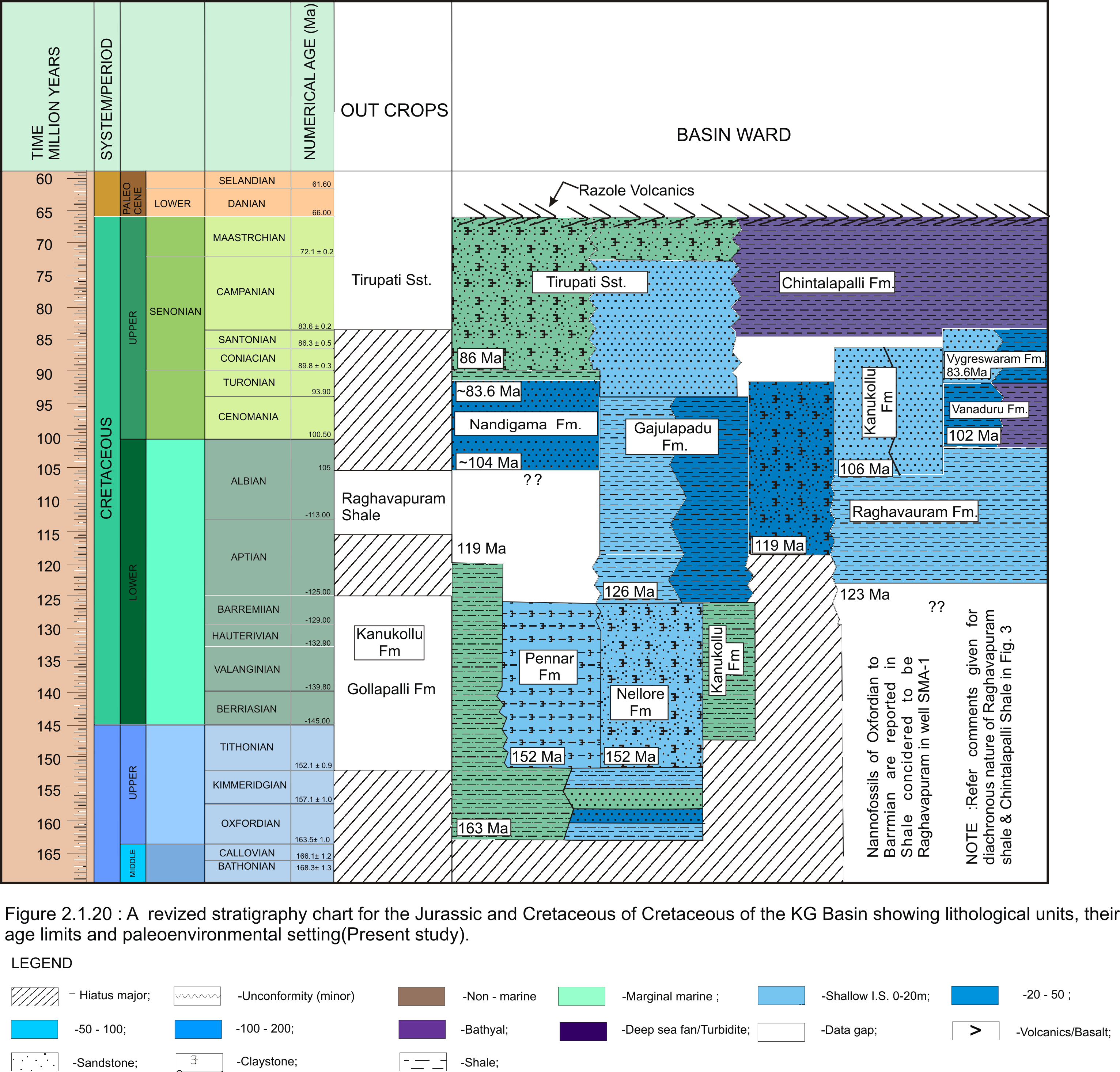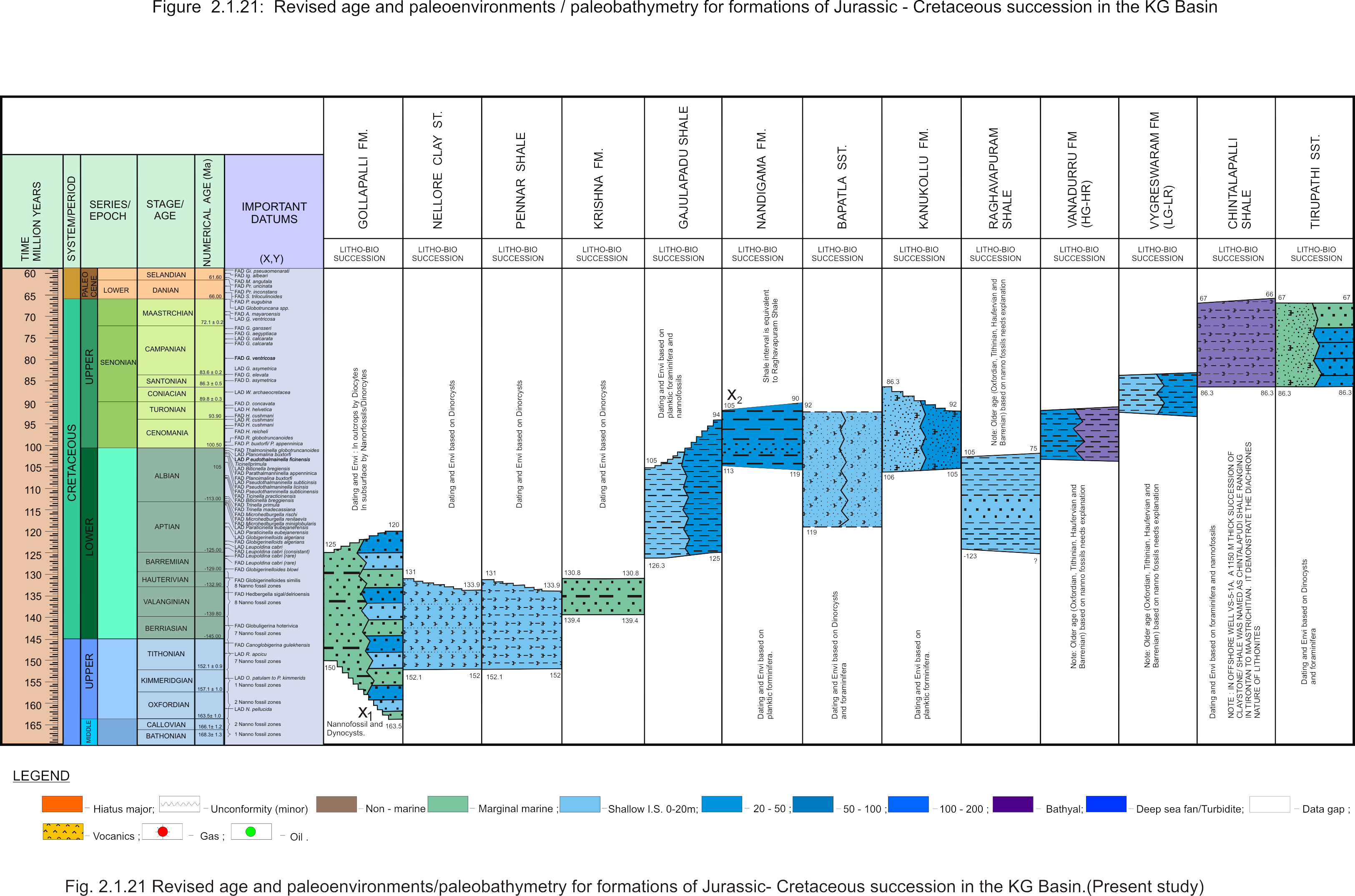Raghavapuram Fm
Type Locality and Naming
BASINAL and LANDWARD: Named after Raghavapuram village. The type section is exposed near Raghavapuram village at the western margin of the basin. The hypostratotype is in the well North Penugonda-A (depth interval: 4200-3950 m). It was named after the Raghavapuram village by King (1870). Later ONGC team led by Venkatarengan et al. (1993) adopted it for subsurface sections and issued as Document-VII by KDMIPE, ONGC, Dehradun (1993). [Original Publication: King, W. (1870) The Upper Gondwanas and other formations of the coastal region of the Godavari district, Memoir Geological Survey of India, vol. 16 (3), pp.]. Reference well: Well Tanuku – 1 (depth interval: 1765-2565 m), Well North Penugonda-A (depth interval: 4200-3950 m).
Synonyms: Raghavapuram Shale
[Figure: Map showing the locations of designated holostratotype section for the formation in the KG Basin (After ONGC, Pandey and Dave, 1998) in Raju et al., 2021, ONGC Bulletin, Special Issue, Vol. 56, No. 2]
Lithology and Thickness
Sandy claystone. It consists of brittle shales and soft clays with thin sandy beds at places. In outcrop area, shales occur as low magnitude mounds interspersed with sand bodies; shales are splintery in nature. These sands are white to greenish, medium grained; the reference section of the formation lies in Well North Penugonda-A, where it is represented by gray, hard compact, fissile, silty, calcareous shale with occasional presence of fractures, sliekensides and load structures. Its thickness in the type area measured on the scarp face directly is 80 m, and thickness in Well North Penugonda-A is 250 m. The formation thickens basinwards.
[Figure: Lithocolumn of the type section of Raghavapuram Formation, (after Bijai Prasad, 1999)]
[Figure: A revised stratigraphy chart for the Jurassic and Cretaceous of the KG Basin showing lithological units, their age limits and paleoenvironmental setting (present study) in Raju et al., 2021, ONGC Bulletin, Special Issue, Vol. 56, No. 2]
Relationships and Distribution
Lower contact
Unconformable with the Gollapalli Fm and the Kanukollu Fm sandstone
Upper contact
Unconformable with the Vanadurru Fm and the Tirupati Fm sandstone
Regional extent
GeoJSON
Fossils
The record of Ammonite genus, i.e. Acanthohoplites is significant in the type section (Bijai Prasad and Pundir, 1998). The subsurface sections of this formation represented by planktic foraminifera, Ticinella bejaouensis, Hedbergella trocoidea, H. gorbachikae and Microhedbergella miniglobularis.
Age
Depositional setting
Inner neritic to outer neritic.
[Figure: Revised age and paleoenvironments/paleobathymetry of formations of Jurassic-Cretaceous succession in KG Basin in Raju et al., 2021, ONGC Bulletin, Special Issue, Vol. 56, No. 2]
Additional Information



